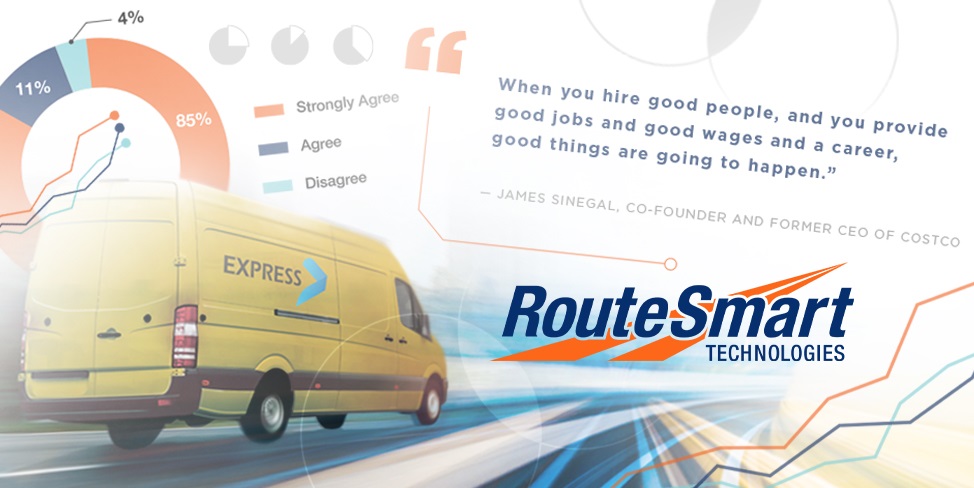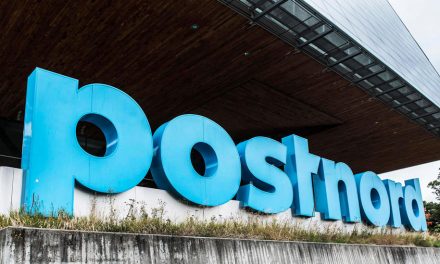
Improving driver satisfaction is the key to an exceptional customer experience

In the delivery industry, customer service is key says Doug Hill, VP of Marketing at RouteSmart. It doesn’t matter what you’re delivering, customers expect it on time, in good condition and in the right place.
“A poor customer experience can lead to a negative review – or even worse – a viral video with the potential to severely damage a company’s reputation.
Before the complaints start to roll in, there’s a question you should be asking yourself: Are my drivers happy?
In short, driver satisfaction needs to be a priority when considering how to plan your daily deliveries. This year, RouteSmart tasked the firm Adelante SCM to develop a research report surveying 28 industry executives in the last-mile delivery industry. The goal was to explore the link between driver satisfaction and customer satisfaction. As you would expect, they are tightly connected. A few takeaways:
- Eighty-five percent of companies strongly agreed that customer service in last-mile delivery will become a greater competitive differentiator in the next 1-3 years.
- Almost ninety percent agreed there is a direct link between driver satisfaction and customer satisfaction.
- The vast majority of those surveyed see the market for finding qualified delivery drivers as becoming “much more challenging” (46%) or “more challenging” (43%) in the next 1-2 years.
- Only 29% of respondents stated that they currently measure driver satisfaction.
All indicators point to a need for improving driver satisfaction to make operations run more smoothly. The COVID-19 pandemic has affected every profession, and delivery drivers are no exception. When the world shut down, last-mile deliveries heated up, experiencing unprecedented growth. Drivers have been pushed to their limits, reporting longer days than ever. Absenteeism is up, in addition to the overall shortage of drivers.
The American Trucking Association reports a shortfall of 60,000 qualified drivers last year, and that’s estimated to surge to 160,000 by 2028. Add in poorly planned, or even unsafe route plans, and you can understand the struggle to retain and recruit qualified drivers.
Improving driver satisfaction goes a long way in finding and retaining qualified drivers, which remains a huge challenge in today’s market – and will continue to be a challenge going forward.
The good news is driver satisfaction can be improved. But how?
The obvious answer is higher pay and better benefits. Yet, it may surprise you, that was not the top response in the driver satisfaction survey. In overall votes, the top contributing factor to improving driver satisfaction was having a fair and consistent workload.
Along with higher wages and a fair and consistent workload, “logical package loading and easy retrieval” made up the top three, according to the survey. Other answers which scored high were logical package loading and easy retrieval and reduction of administrative tasks and paperwork.
“Drivers want predictable jobs when the shift starts, as well as the same workload every day (no surprises), commented one respondent. “Drivers would like to have a clear overview of their tasks for the day; no long searches in the vehicle [to find packages]; they want to focus on driving and service, with direct guidance to the stops (no searching on maps).
Having a fair and consistent workload starts with having better route plans. Your drivers need daily route plans that are fair, efficient, and consistent. They need to know where to go and build familiarity with the local geography. Better route plans help build route sequences that consistently align with truck loading zones so drivers can retrieve packages quickly. Better route plans emphasize safety, eliminate dangerous turns and maneuvers, prioritize same-side delivery, minimizing the need for drivers to cross the street to make deliveries.
“How do I build a better daily route plan” is a question we are asked all the time. Industry professionals want to know how to create an efficient and practical delivery system that accounts for daily and seasonal fluctuations in volume. What it really comes down to is static vs dynamic routing. Both strategies have their merits and drawbacks. But we have seen the most success with a hybrid or adaptive routing approach. We cover that topic extensively in this blog post.
Examining the relationship between customer satisfaction and driver satisfaction is just the first step in working toward improving the overall customer experience. Having a route plan that benefits the driver, the company, and ultimately the customer, will go a long way in achieving that goal. ”
Read the full Driver Satisfaction Survey report on the RouteSmart website.










